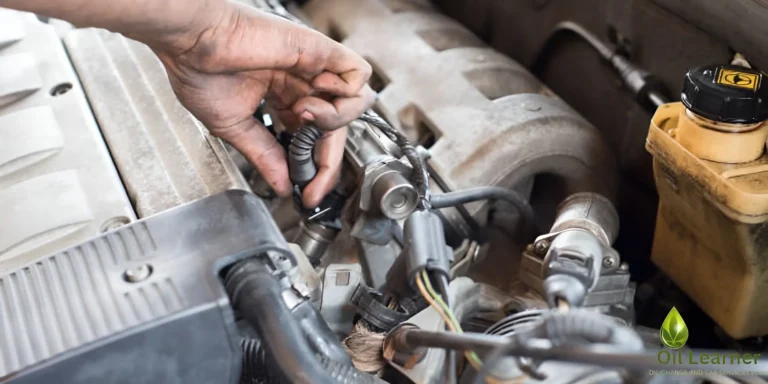Understanding Transmission Oil Change Costs: What to Expect & How to Save
Hey there! If you’re like me, you always try to extend the life of your car as much as possible. This article examines a crucial aspect of vehicle maintenance: transmission care. We’ll cover all the basics of transmission oil change costs, providing you with the knowledge you need to make informed choices to boost your car’s performance.
Table of Contents
Transmission Fluid Change Costs Overview
Average Cost Breakdown
However, some of the most significant criteria make the price differ a lot when changing the transmission oil. They are the following. As for the cost, it’s positioned in the range of $80 to $250 usually.
- Typical Price Range: A standard transmission fluid change will cost you approximately $100 to $150, on average.
- High-End vs. Low-End Costs: For a luxurious car or extra services offered, one could be charged up to $250 for its or her shipment. In contrast, for the small, economy class it might range from $80 at the lowest end.
Factors Affecting Costs
Several factors can influence how much you’ll end up paying.
- Vehicle Make and Model: This means that cars with luxury and high-performance features will have high service costs. This is because oils and procedures differ in regular and high-end cars.
- Automatic transmissions need more fluid. Servicing them is more complex than for manual transmissions.
- Oil Quality: Synthetic transmission oils, although they may be more costly, have better efficiency and durability compared to conventional oils.
- Service Provider: Be aware that dealers are usually more costly than an independent mechanic. There are times when doing it on your own will be cheaper, but it’s going to need the right equipment and understanding.
The process of transmission fluid change.
What happens during a transmission fluid flow service?
Transmission fluid flow service is typically a routine process that forms part of a car’s regular maintenance schedule.
Let’s break down what happens during a transmission fluid change:
- Drain the Old Fluid: The first step will be to drain the old transmission fluid by the technicians.
- Replace the Transmission Filter: If necessary, it’s been changed.
- Clean the Transmission Pan: The pan is washed, especially if it contains any sludge or any other debris.
- Refill with New Fluid: Transmission fluids include new quantum and 5w-30 motor oil, which is added.
- Check for Leaks and Test Drive: The last of them will look for signs of leakage, and during the final inspection they’ll take your car for a drive.
A Closer Look at the Transmission Fluid Exchange
You’ve probably been wondering what’s usual for a vehicle’s transmission to go through an exchange of fluids. It’s a little broader than just the change of the normal car fluids.
It’s a device that hooks the vehicle, pumps all the old fluid out, and installs a new one for you. This will help to change almost all the old dirty fluid and, in the process, result in a better-performing, longer-lasting transmission.
Transmission problems are always so inconvenient to all car owners and one of them is known as transmission slipping. When your car delays when shifting gears, hesitates in accelerating, or produces unusual sounds, it could be due to slipping transmission.
If you want to learn the symptoms and things to be aware of, please read the article “How Can You Tell Your Transmission Is Slipping?” Knowing the signs early will prevent having to make a lot of costly changes.
Importance of Transmission Flush Services

Why do you need Transmission Flush Services?
Transmission flush services are essential for several reasons:
- Preventive maintenance helps by creating forces. These forces rinse out dirt, sludge, and harmful contaminants from your transmission.
- Improved Performance: New and fresh fluid means that there is less friction for the gears to go through, hence its operation is more efficient.
- Extended Lifespan: Periodic checks will help you increase the durability of the transmission and repair it for free in the long run.
Frequency of Transmission Flushes
Related to the previous question, we can also inquire about how often you need to get a transmission flush. It depends on your car and mode of driving. Mainly, it’s advised for most manufacturers that the transmission flush be done every 30,000 to 60,000 miles. Still, it’s advised that you consult your specific owner’s manual for the most reliable information.
DIY Transmission Fluid Change
Many drivers choose to perform a transmission flush themselves.
It becomes difficult, but still, you can do a transmission flush yourself, so that you can be in a position to save a few bucks. Here are some pros and cons:
Pros: First of all, you can minimize your expenses, and besides, it’s always rather stimulating to do everything yourself.
Cons: It’s a time-consuming and very comprehensive process that needs proper resources. There’s also the factor of mimicking it inappropriately and probably damaging something.
Step-by-Step Guide
If you’re up for the DIY challenge, here’s a step-by-step guide:
- Gather Tools and Materials: You’ll require a jack, jack stands, a drain pan, as well as a new transmission fluid, and a new filter.
- Lift the Vehicle Safely: To lift the front part of your car, you’ll need a jack as well as jack stands.
- Drain the old fluid: put the drain pan beneath the pan of the transmission, then unscrew the drain bolt.
- Replace the Filter: It’s now necessary to take off the transmission pan, put in a fresh filter, and wash the pan.
- Refill with New Fluid: Replace the pan, lower the vehicle, and replace the transmission fluid with a new one.
- Check for Leaks and Test Drive: Check to make sure there are no drips anywhere and do a road test to confirm that all the functions are working properly.

Saving money on transmission fluid changes.
Tips and Tricks
Here are some tips to help you save money on your next transmission fluid change.
- Regular Maintenance and Checks: If maintenance is done regularly, then one will be able to avoid situations whereby they’ve to repair their cars.
- Sample Coupons and Discounts: Check for coupons and discounts from the domestic service providers. Truly, the power of research was evident as a little bit of research goes a long way.
- Bulk Purchase of Transmission Oil: When using transmission oil, buy it in large quantities to cut expenses. This is especially helpful if you plan to make several changes yourself.
Transmission issues are some of the worst and most potentially damaging problems that you can encounter with your car. They range from rattling sounds to problems with shifting gears and detection of these problems early is important.
If you are interested in the specific descriptions of these problems and solutions, you can read the article called “13 Signs of Transmission Problems and Their Solutions.” The information that has been provided here will allow you to identify problems and solve them before they worsen.
4 Factors That Affect Transmission Fluid Change Costs
- Vehicle Type: As for the amount and type of fluid, it’s established that larger vehicles and, in particular, luxury cars require larger investments.
- Transmission Type: It’s generally more costly to service an auto transmission than a stick because more fluid and often more labor is needed.
- Oil Quality: If one seems better, it’s synthetic. The higher price is justified by better performance and durability. This means fewer expenses in the long run.
- Service Provider: Dealerships usually are a bit pricey compared to independent shops, but might hold more expertise specific to your car.
Additional Resources
Estimation of Samples
To give you a better idea of what to expect, here are some sample costs for different vehicle types:
- Economy Cars: $80 to $120
- SUVs and Trucks: I’ve estimated the cost of completing a budget worksheet to be between $120 and $200.
- Luxury and High-Performance Vehicles: A rare item can be bought for $200 to $250 or more.
Links to Further Reading
If you’re interested in learning more about transmission maintenance, check out these resources:
- Transmission Fluid Maintenance: Safer, older homes are often built from balloon framing, which made it easier to read more about it.
- How to: Change Your Transmission Fluid
- Information on the Ins and Outs of Car Maintenance
Conclusion
Recap of Key Points
Caring for your transmission is important in the life and efficiency of your car’s powertrain system. With the knowledge of the costs involved in transmission oil changes and the factors that affect these costs, one is in a better position to avoid the costs.
Final Thoughts
Transmissions, whether it’s a fluid change or a full flush, are a cheap thing to do compared to the huge costs of the likelihood of more significant damage to the transmission. Each of the methods ensures you keep an eye on the transmission’s status, whether you’re doing it yourself or visiting the professionals.
Call to Action
Get the Reddit app.
Read other car enthusiasts’ tips and advice, and join the conversation by downloading the Reddit app.
Stay Updated with the Latest Information
For the latest submission and other helpful information regarding car care, you can always visit our page. This will make sure that you are ready for any problems as they occur so you can easily repair your car and continue with your journey.
Moreover, make sure to go through the sample coupons/discounts that can be referred to for saving the next time you are about to change a transmission fluid.







